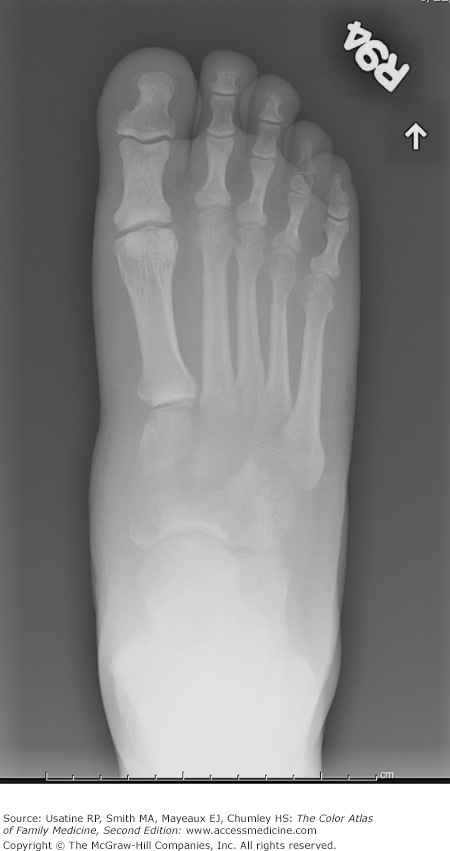Patient Story
A 62-year-old man with type 2 diabetes for 15 years presents with history of erythematous, hot, swollen right foot for 2 weeks (Figure 212-1). He is on multiple medications for management of his diabetes, but it is not successfully controlled. The patient does not recall any trauma to the foot. Three days ago, he noticed pain in his foot. He denies fever or chills. The radiograph of his foot (Figure 212-2) shows midfoot osteopenia, an early sign of acute Charcot arthropathy.
Introduction
Etiology and Pathophysiology
Charcot arthropathy is a gradual destruction of the joint in patients with neurosensory loss, most commonly seen in patients with diabetic neuropathy.2 The pathogenesis is unknown. Proposed theories include:
- Neurotraumatic theory—Following sensory-motor neuropathy, the resulting sensory loss and muscle imbalance induces abnormal stress in the bones and joints of the affected limb, leading to bone destruction.
- Neurovascular theory—Following the development of autonomic neuropathy there is an increased blood flow to the extremity, resulting in osteopenia from a mismatch in bone reabsorption and synthesis.
- Stretching of the ligaments because of joint effusion may lead to joint subluxation.
- It is most likely that Charcot arthropathy involves all of the above mechanisms together.
Diagnosis
The diagnosis of Charcot arthropathy is suspected based on the presentation and confirmed with imaging.
Stay updated, free articles. Join our Telegram channel

Full access? Get Clinical Tree




